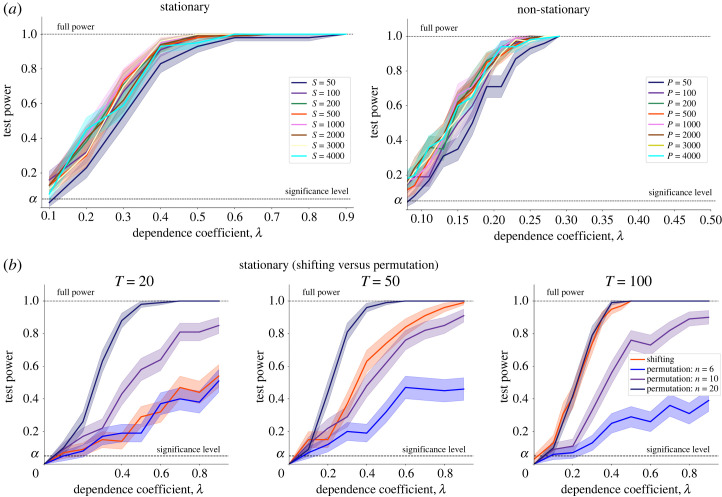Figure 8.
Robustness and efficiency of shifting and permutation resampling strategies. (a) Test power for the same model in its stationary version (Model 1.1 (3.2), using shifting resampling, left) and non-stationary version (Model 2.1 (4.2) with linear trend, using permutation resampling, right). Relatively few null samples (S, P > 100) are enough to attain high test power for both schemes. (b) For stationary time series with multiple realizations, both shifting and permutation can be employed. Shifting is preferred if the number of time observations (T) is large relative to the number of realizations (n); conversely, permutation is preferred if n is large relative to T. For Model 1.1 (3.2) with T = 20, the permutation scheme with n = 6 already reaches comparable performance to shifting, whereas for T = 100 we need n = 20 for permutation resampling to reach comparable performance to shifting. We use S = P = 1000 for all tests in (b).

